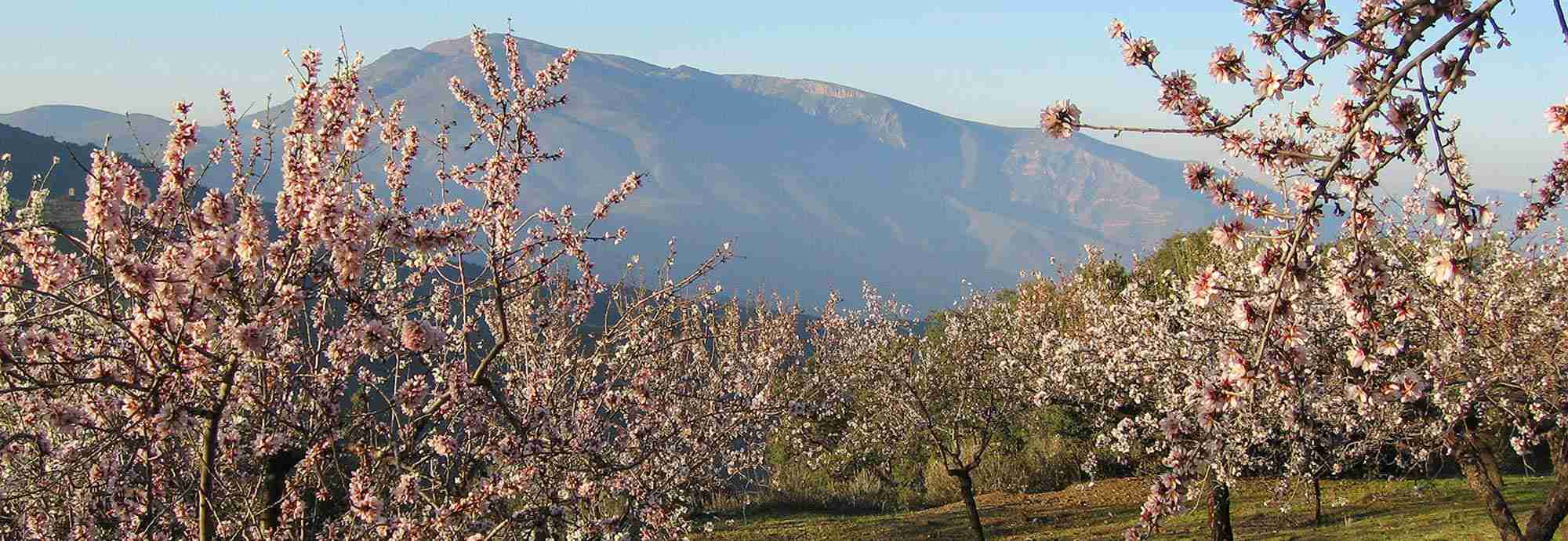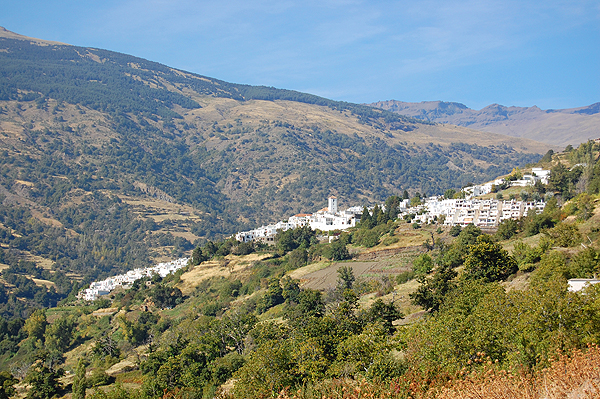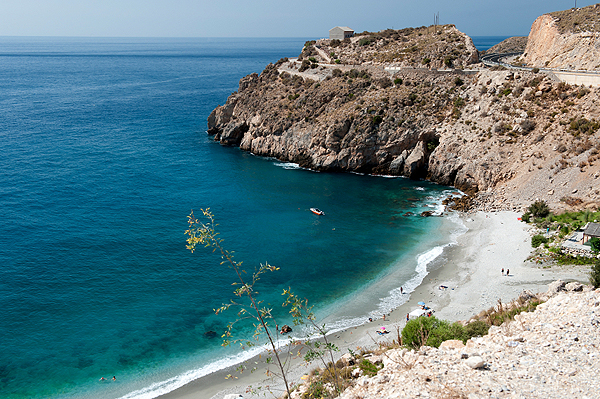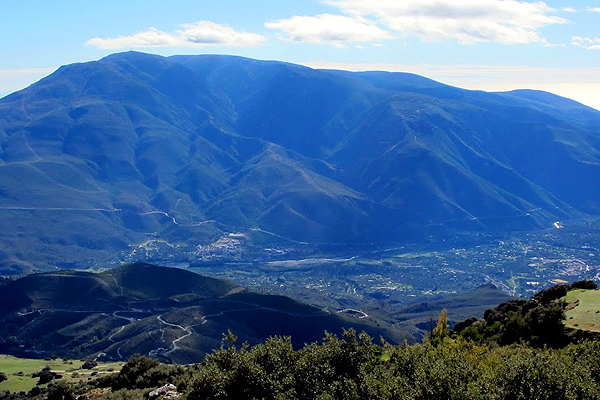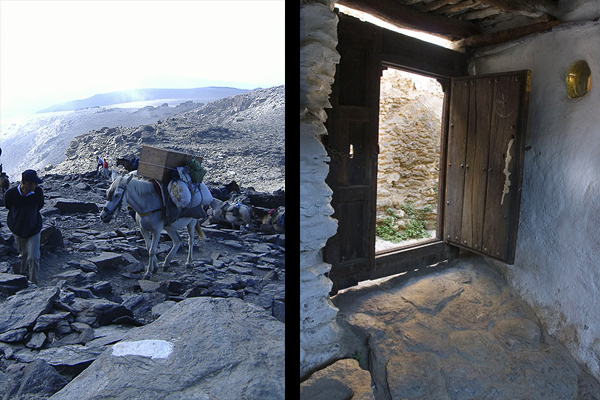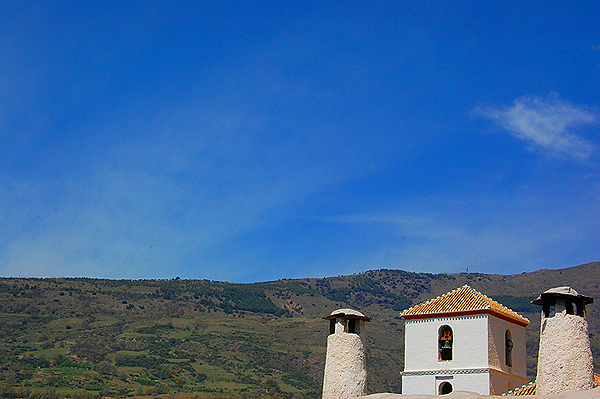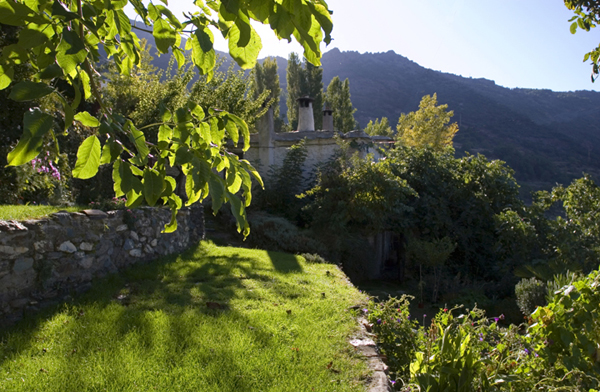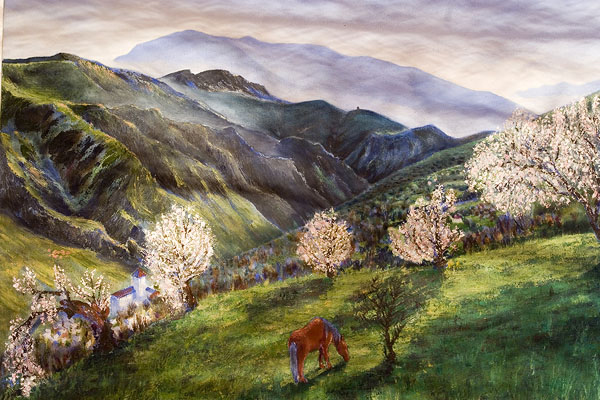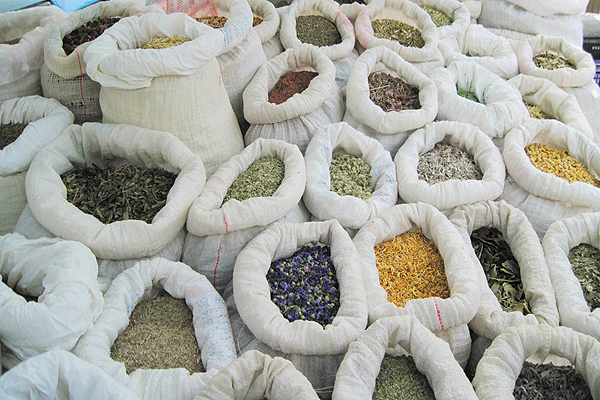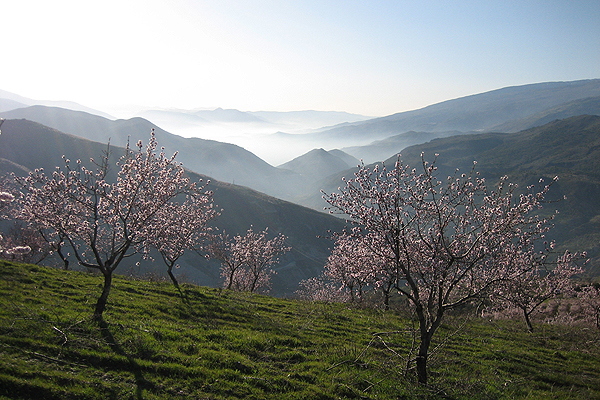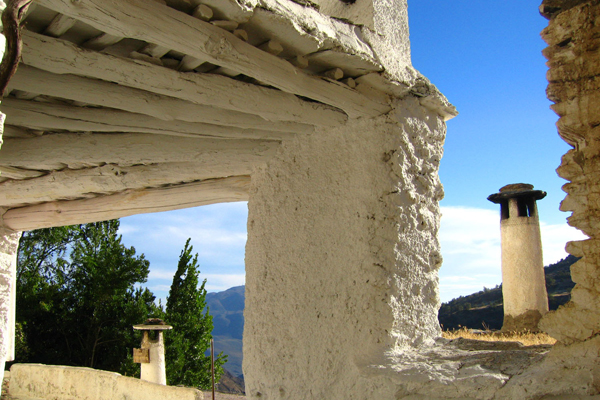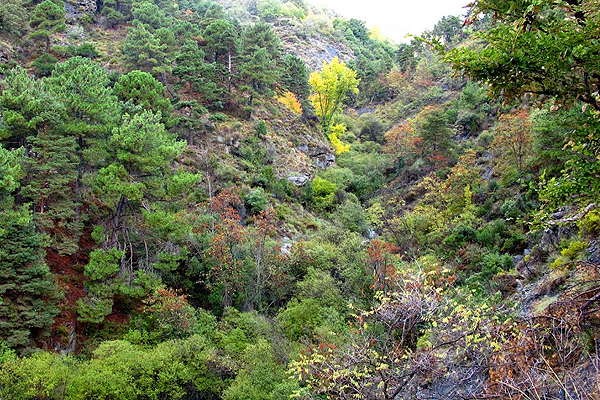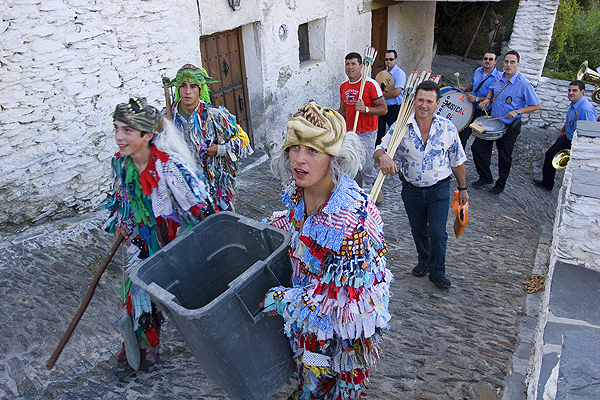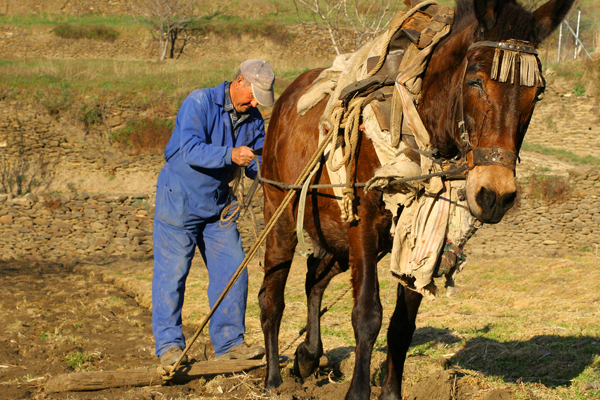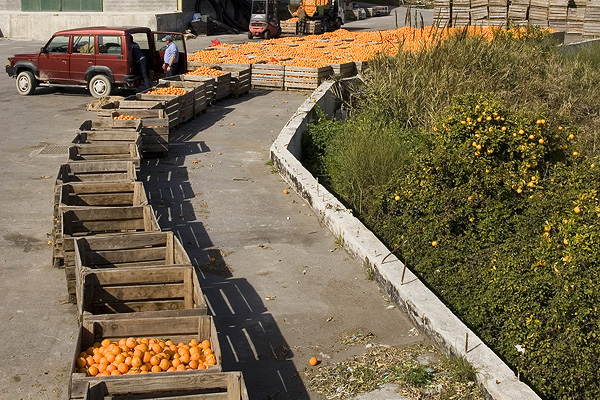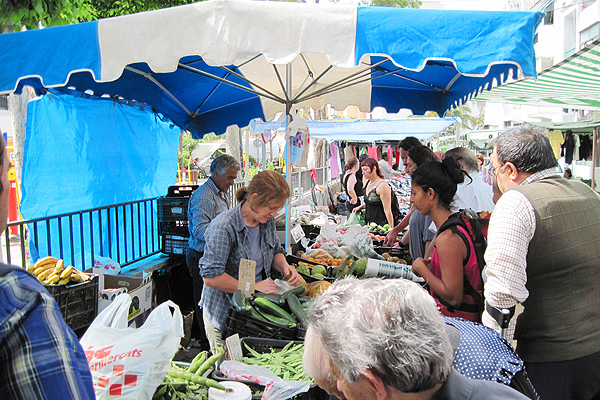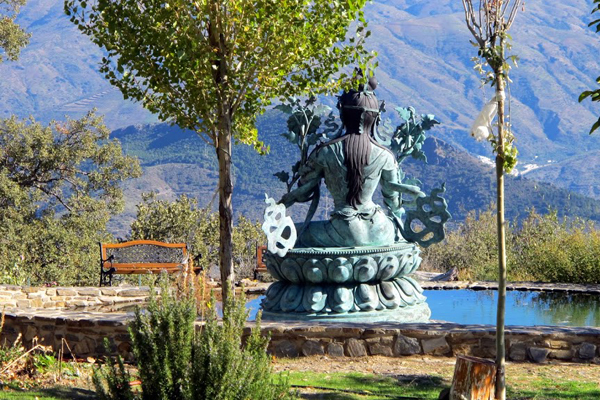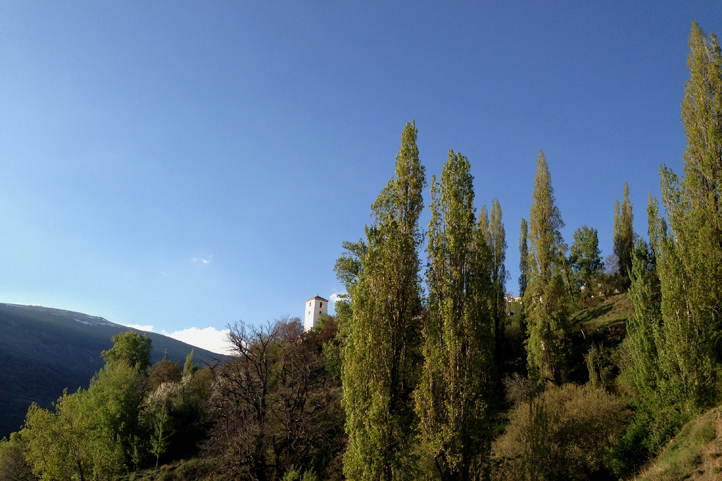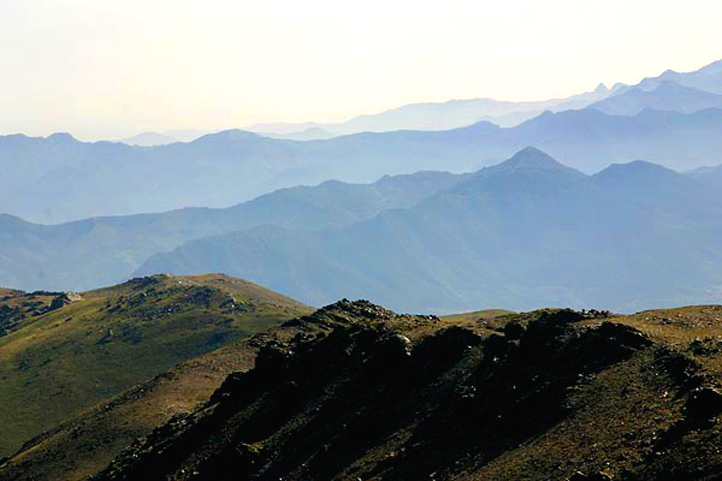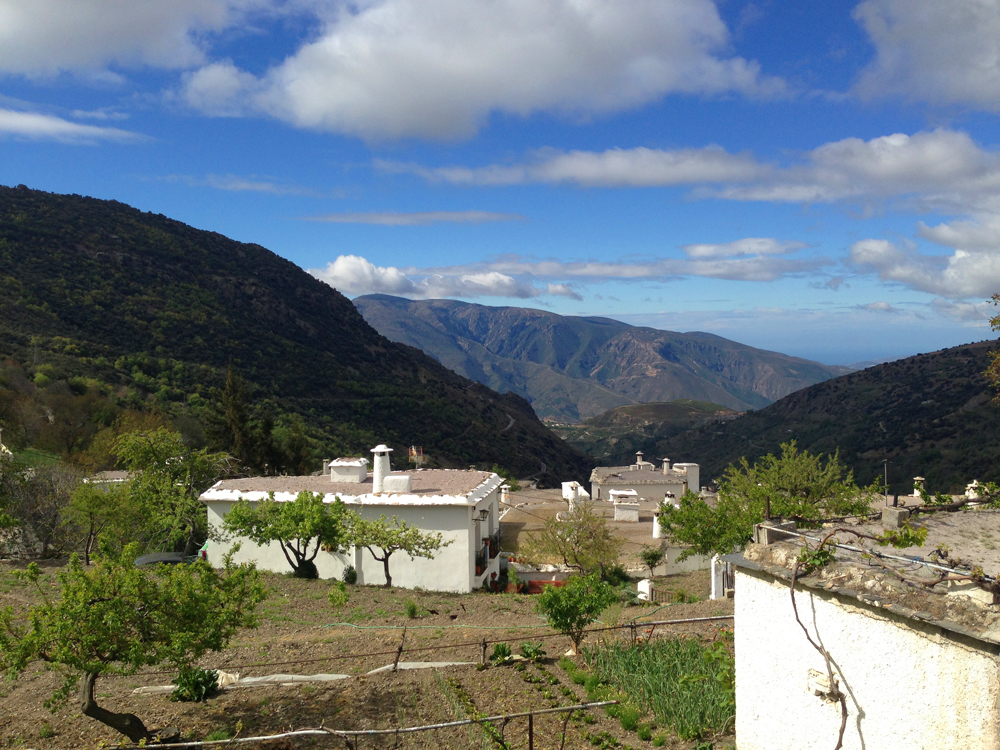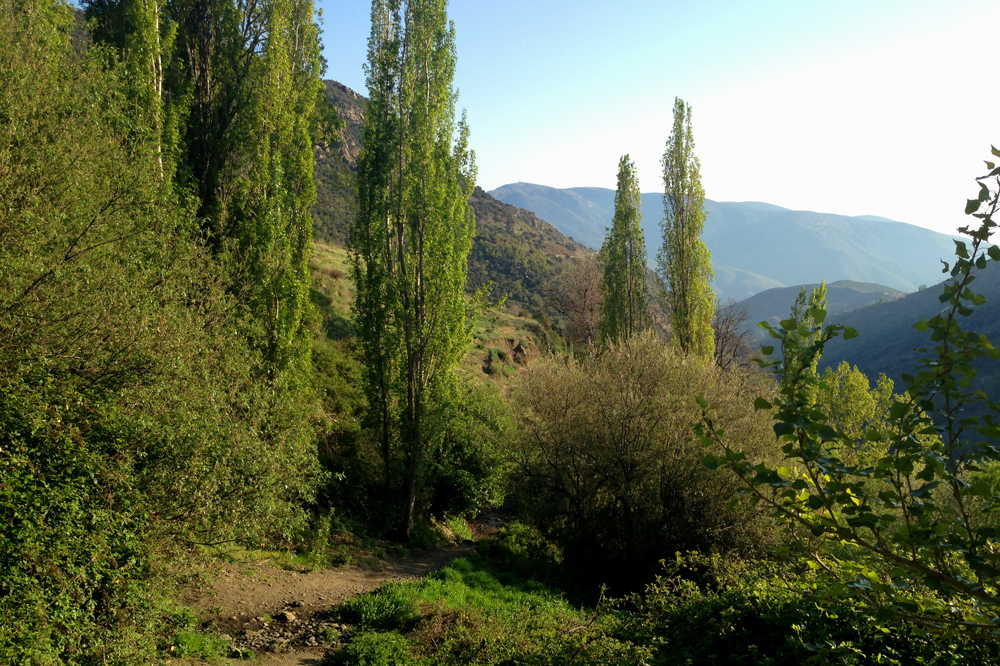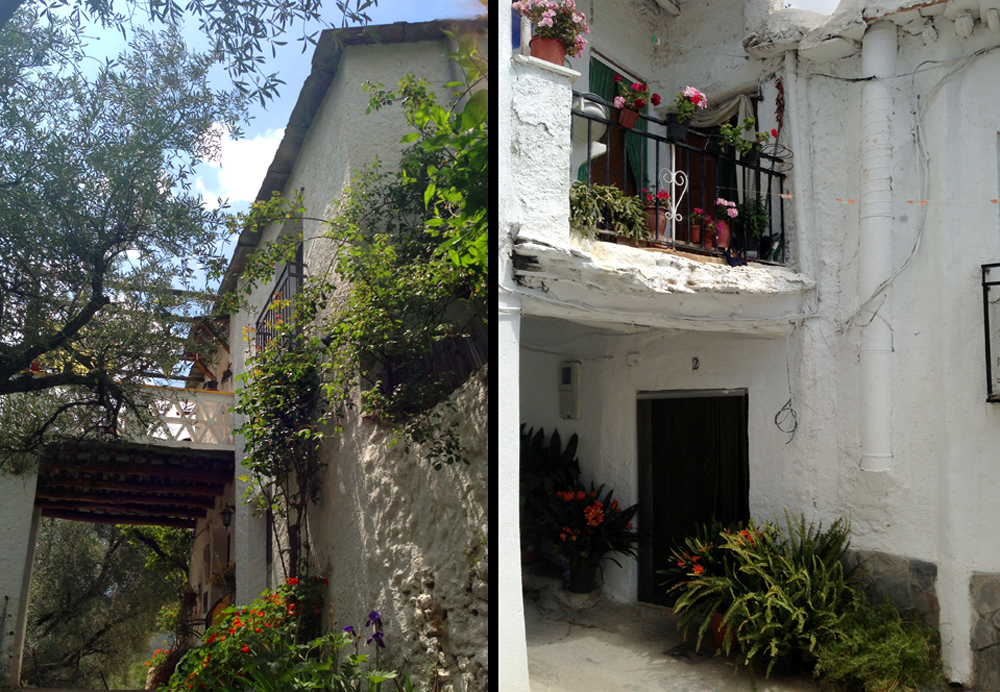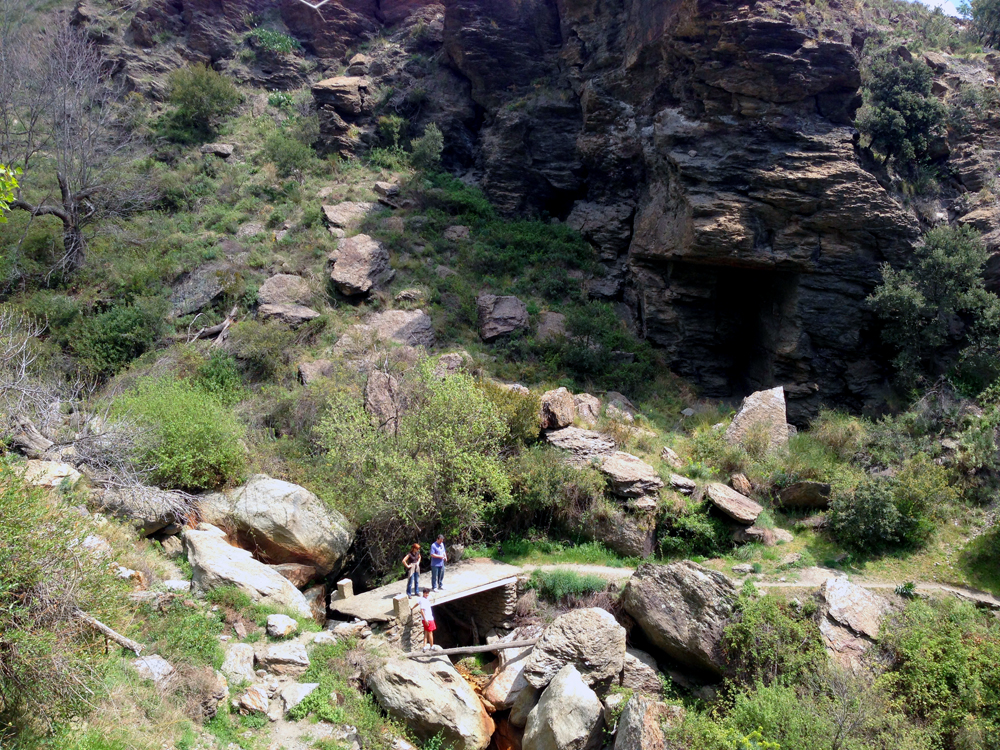The Low Alpujarra spreads down a semi-tropical river valley from the main market town of Orgiva and nearby Lanjarón. The climate is very warm and conducive to lazing by pools at secluded garden villas.
The Alpujarras' main market town, Orgiva (population 5,700) seems large and busy by comparison with everywhere else. It has the virtue of having the best shopping, including a lively Thursday morning market, and café-bar terraces that serve good breakfasts and tapas.
The focal point for the Low Alpujarra enjoys a semi-tropical climate. You'll see orange and lemon trees, palm trees, avocado. Holiday villas are mostly located close to town in the fertile valley of the River Gualdalfeo.
Although the privacy and peace-and-quiet of your holiday villa may be the main attraction, the town has a character all of its own and can surprise the causal stroller with scents of jasmine and honeysuckle, and colourful splashes of bougainvillea.
Lanjarón
This small spa town, much quieter than Orgiva, is best known for its mineral water. Lanjarón is the first place you come to after leaving the highway that runs between Granada and the Mediterranean coast. Water is everywhere in Lanjarón and everyone has their favourite fountain. The town is built on the lower slope of the mountains, where holiday homes enjoy good views out over the Guadalfeo valley.
THE HIGH ALPUJARRA
just 30 minutes away up the mountain, is another story. Rugged mountainside is the setting for cottages, old villages and walking or horseriding amidst spectacular scenery. Traditional architecture and modern comfort combine at self-catering houses in the highest villages in Spain.
Bubión and Capileira, built way up the dramatic Poqueira Gorge, have the Sierra Nevada as a backdrop. The nearby Tahá district has equally impressive yet gentler terrain and some exquisite hamlets.
It's the High Alpujarra that provides the best sights, trails and photography. Plenty of walking routes: The views and the rambling are irresistible. The paths, mule tracks and forest trails are an open invitation to everyone to get a real feel for the place and enjoy wonderful mountain countryside and views.
Capileira
Pretty Capileira (population 570) crowns the Poqueira Gorge. The backdrop of the Sierra Nevada is as dramatic as the huge views south down the ravine to Bubión, Pampaneira and to Sierra Lujar, the last mountain before the Mediterranean Sea. The old streets of flat-roofed houses form a fascinating maze of alleys and passages on the side of the gorge. There are several bar-restaurant-cafés with terraces and WiFi. Walking paths lead down to the river, and up the gorge. The road continues up from Capileira to Sierra Nevada National Park.
Bubión
An easy 2-km stroll down the mountain road from Capileira. It's another tranquil village, with views that reach the Mediterranean Sea. From Bubión, footpaths lead down to Pampaneira, up to Capileira, or over the ridge to Pitres and the Tahá. Two traditional weaving workshops are of interest in Bubión: El Telar and Hilacar.
Pampaneira
The third village in the Poqueira Gorge is another interesting old settlement to wander round and explore. It's a popular stop for the occasional tour buses that make it up to the High Alpujarra and has a correspondingly high number of souvenir shops. As the lowest of the three Poqueira villages.
La Tahá de Pitres
Ranged from west to east – unusual for Las Alpujarras – the high valley of La Tahá (from the old Arabic word for "district") is only ten minutes from the Poqueira Gorge, yet has more hours of sunshine and is a little warmer. The landscape is less dramatic and gentler. There are some lovely walks from the timeless little hamlets and country restaurants to build into your itinerary for the day.
GRANADA
One of Spain's most famous cities and the site of the magnificent Alhambra Palaces is an easy drive from Las Alpujarras. Compact enough to walk around and unbeatable for tapas. There are a few buses between Las Alpujarras and Granada, but the service is limited.
BEACHES
The Mediterranean Sea is clearly visible from the mountains of Las Alpujarras and Granada's Costa Tropical is often on the list of holidaymakers' things-to-do. Don't expect golden sands, but do enjoy fried fish on the beach and a great climate. Motril has reasonable beaches but Salobreña a little further on has better. In our Local Guide for Rustical Travel holidaymakers, we direct you to one of the more hidden-away coves near Calahonda, with clear water and a good chiringuito beach restaurant.
BEST OF THE REST
Puerto Juviley
Interesting as a village whose charm stems from its unchanging nature. Tall reeds and grasses grow up along the riverbank. The atmosphere is almost Mexican. It's about ten minutes from Órgiva, and reached along the road from Órgiva to Torvizcón.
Sierra Nevada National Park
Above the Low Alpujarra rise Sierra Lújar to the south and the great range of Sierra Nevada to the north. The Sierra Nevada National Park offers an utterly different aspect to the same geographic area, with a high altitude climate and terrain, and snow atop Mulhacén mountain.
O Sel Lin
Sometimes referred to misleadingly as a "Buddhist monastery," it is a modest Tibetan Buddhist centre and retreat with an interesting stupa and stupendous views. It was inaugurated by the Dalai Lama in 1982. You can drive up almost all the way there. Drive down through Pampaneira, continue five minutes or so to the big curve at Padre Eterno and turn right up the track where horse riding is advertised. Afternoon visits are preferred.
Architecture
One of the most characteristic features of the High Alpujarra villages is their unusual architecture. Note the unique flat-roofed design of the houses with their chimneys, a feature going back centuries and originating with the Moorish occupation of Las Alpujarras, who imported the building design of the Berbers in sun-parched northern Africa.
Public swimming pool
Just outside Pitres is a campsite with a large open air swimming pool, surrounded by lawns, that opens to non-campers during the summer months. There's a restaurant here, too.
River Poqueira
The river through the gorge pools to form impromptu bathing spots. They're not broad enough for swimming, but the cold mountain water will cool off the most overheated hiker.
Horse riding
Suitable for beginners and experienced riders. Tracks pass through Andalusian mountain countryside, through orange groves and over rivers. Dallas Love's stables just above Capileira have an excellent and deserved reputation.
Biking
Good, well-maintained cross country mountain bikes are available for hire in Capileira. You can book a biking guide to ride the most interesting routes.
FIESTAS
Low Alpujarra
On the eve of San Juan, 24th June, when the rest of Spain celebrates the saint with fire rituals, the people of Lanjarón cool off the hot night with a no-holds-barred water fight in which getting drenched is compulsory. Locals from other Alpujarra villages know better than to attempt to drive through Lanjarón that night!
Orgiva's main fiesta, the feria grande, is held the last week in September. It involves activities such as floats and photographic contests, costumes, bingo and games for children, and bands that keep people dancing all night.
Earlier in the year, a fortnight before Easter is Orgiva's fiesta of the Santísimo Cristo de la Expiración, a religious feast day and excuse for letting off a barrage of fireworks.
High Alpujarra
In January, the chiscos is one occasion when a village fiesta is meant just for the locals. They gather round bonfires in neighbourhood streets to roast pieces of pork on a date that would have traditionally coincided with the annual matanza, or killing of pigs to make sausages and ham. The main summer festival in each village with live bands and dancing is celebrated over an August weekend. The first weekend in November, the mauraca involves more standing round bonfires, this time roasting chestnuts and drinking cups of anis.
FOOD AND DRINK
The culture of tapas is alive and healthy in the Alpujarras. In the province of Granada, a tapa with your beer or glass of wine comes free. Even a few olives are a welcome accompaniment to a drink and they get better with each refill. They can often be generous substitute for a decent meal.
In the Low Alpujarra, supermarkets are best in Orgiva. A large market with textiles and other products takes place in Orgiva on Thursday mornings. Local cuisine in the Low Alpujarra includes goat, almonds and figs in season. Migas is a filling dish based on fried crumbs. Otherwise, standard fare is varied by restaurants catering to the tastes of international residents and visitors. The formidable plato alpujarreño is a fry-up consisting of spicy sausage, egg, black pudding and sliced potato with onion and green pepper."
Wines from the Low Alpujarra, especially the Sierra de la Contraviesa, have been improving over the years to acquire a definite respectability. The Low Alpujarra's proximity to the Mediterranean coast means that excellent fish and seafood are a short drive away in Motril, where the best restaurant options are in the port.
Supermarkets in the High Alpujarra are best in Capileira and Pitres. Each small village also has its own market day, when vendors sell cheap, fresh direct from the truck.
The mountainous Alpujarra used to be one of Spain's poorest areas. It retains a simplicity in its gastronomy that is amply compensated by plentiful servings that will leave no one unsatisfied. The formidable plato alpujarreño is a fry-up consisting of spicy sausage, egg, black pudding and sliced potato with onion and green pepper.
Migas is a filling dish based on fried crumbs and mixed with chopped sausage. Pork is synonymous with "meat" here and features highly on any menu. Vegetarians tend to have a harder time of it, but will be impressed by the giant mixed salads and savour the almond soup, one of the few genuinely autochthonous recipes.
For the sweet tooth, soplillos are the local speciality: almond meringues.
For a sparsely populated area, the High Alpujarra is well provided for in terms of restaurants, including countryside venues with views.
